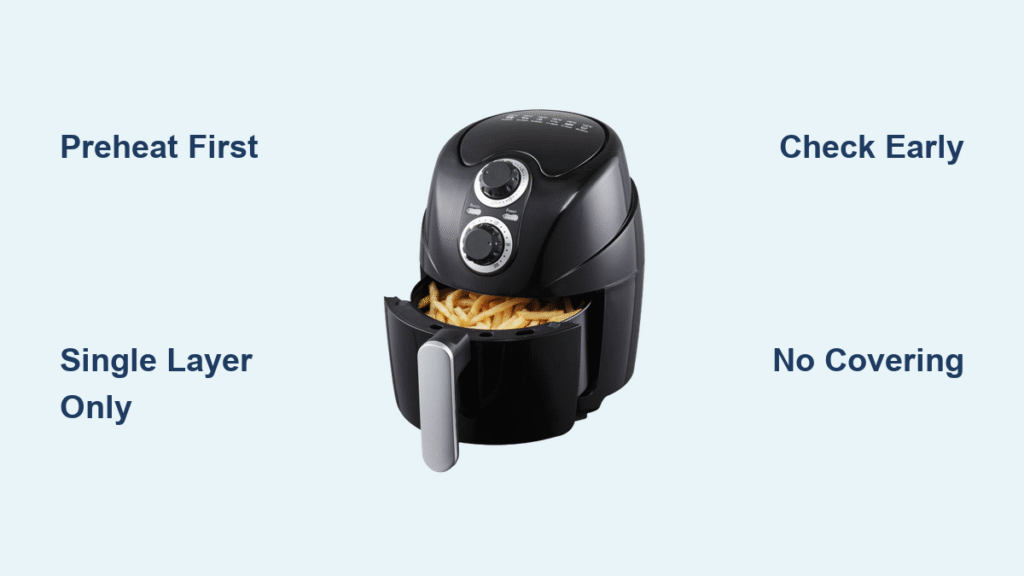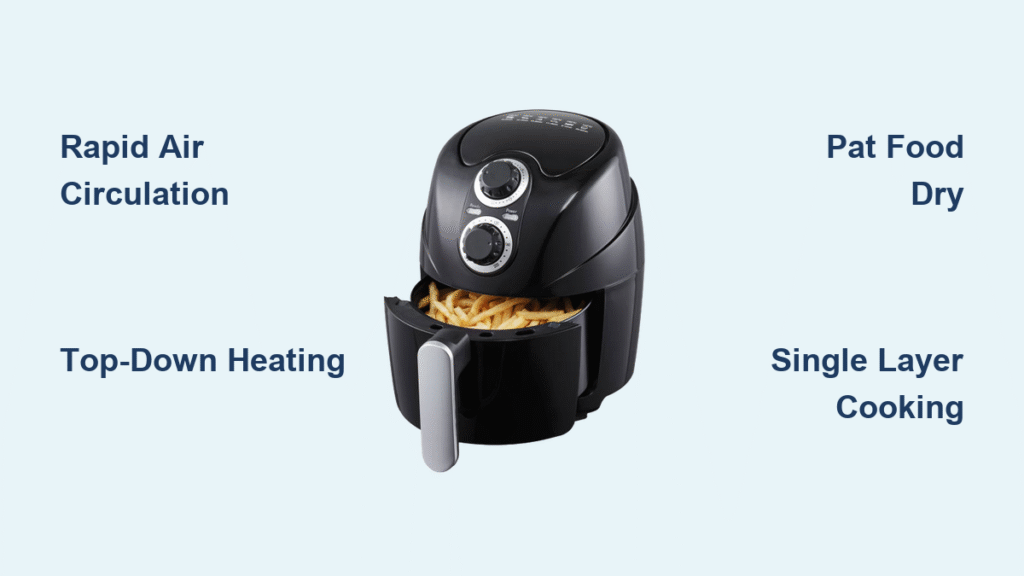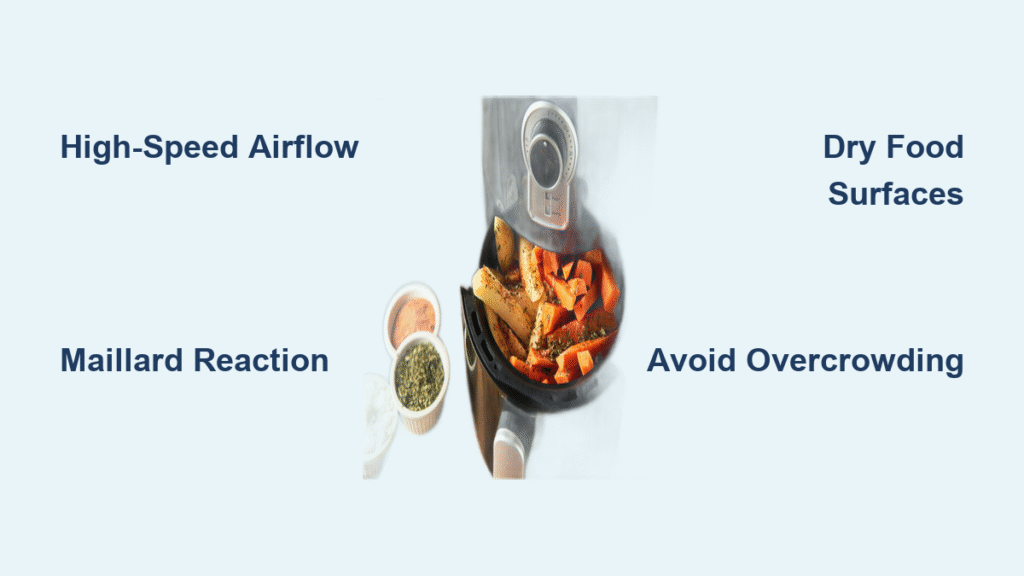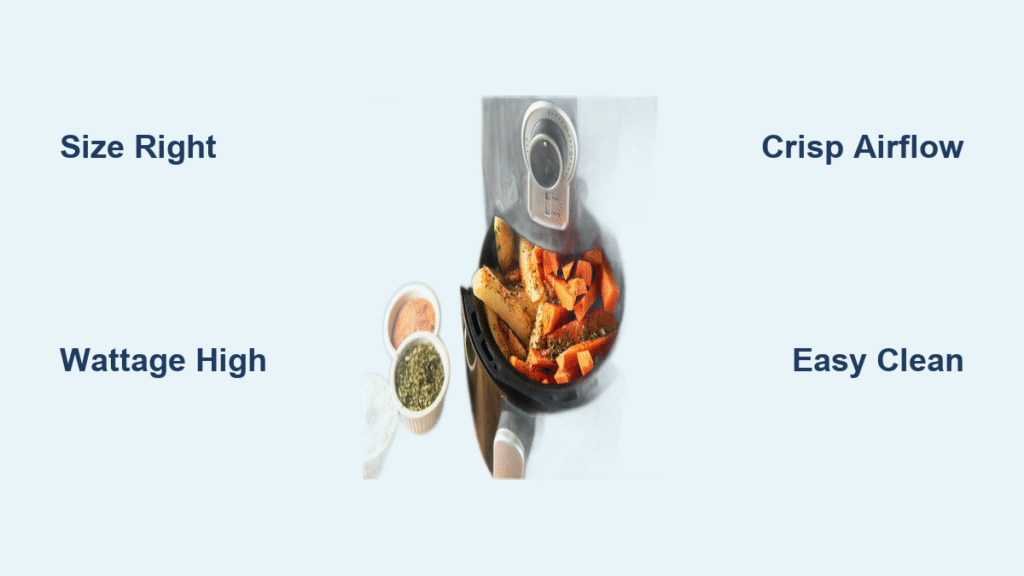Your leftover pizza sits cold and limp in the fridge, its cheese congealed and crust soggy from microwave attempts. Yesterday’s crispy fries? Now a sad, limp pile. Before you resign yourself to disappointing leftovers, discover why how to reheat in air fryer techniques transform yesterday’s meals into today’s crave-worthy dishes. Unlike microwaves that create rubbery textures or ovens that waste 25 minutes and energy, air fryers revive food in 3-5 minutes using super-heated air circulation. This isn’t reheating—it’s culinary resurrection. You’ll learn precise temperatures, timing hacks, and safety protocols to make leftovers taste freshly made, whether you’re reviving pizza, steak, or Chinese takeout.
Why Air Fryer Beats Microwave for Leftovers
Microwaves zap moisture, leaving pizza crusts leathery and fries soggy. Ovens require 20+ minutes of preheating and waste 80% more energy. Your air fryer solves both problems through rapid 390°F air circulation that reactivates dormant oils in fried foods, restoring crunch while heating evenly. Most foods reheat in under 5 minutes with zero sogginess—pizza crusts snap when folded, fries regain golden crispness, and fried chicken skin crackles on first bite. This efficiency isn’t just faster; it uses 50% less electricity than conventional ovens while delivering texture revival impossible with other methods.
Critical Texture Restoration Science
Air fryers work by circulating superheated air at 140+ mph, penetrating food surfaces to evaporate surface moisture instantly. This reactivates oils in batters and breadings, creating Maillard reaction resurgence (that golden-brown crispness) without overcooking interiors. For pizza, this means bubbling cheese atop a crust that’s airy inside yet crisp enough to support toppings. Unlike microwaves that vibrate water molecules (steaming food into sogginess), air fryers mimic deep-frying’s dry-heat magic at a fraction of the energy cost.
Set Perfect Reheat Temperatures for Any Food
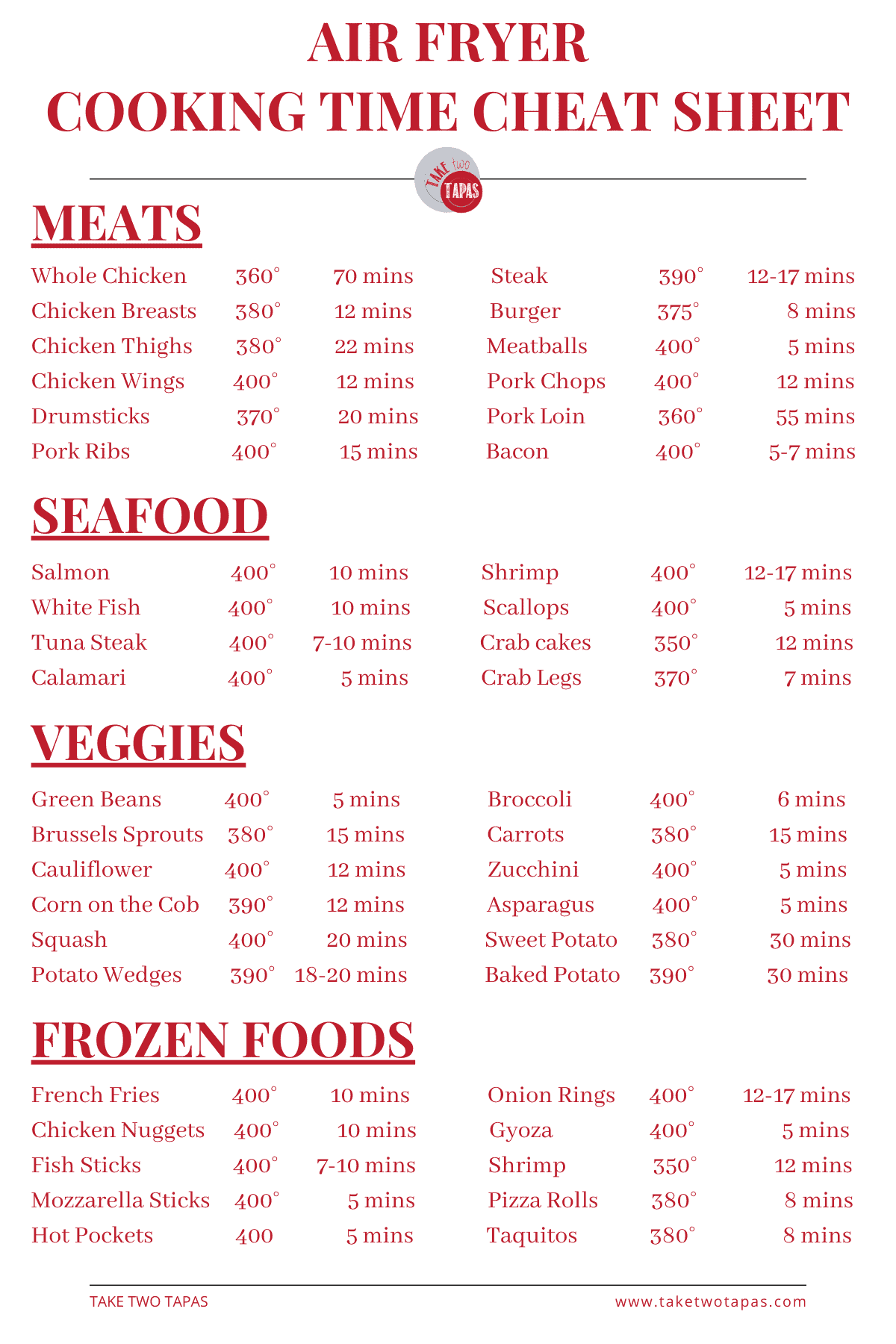
Guessing temperatures ruins leftovers. Use this model-tested framework: High heat (390°F-400°F) for fried foods needing oil reactivation; Medium heat (350°F-375°F) for balanced protein/veggie reheating; Low heat (320°F-350°F) for delicate items like donuts. Always preheat 4-5 minutes for consistent results—skipping this adds 1-2 minutes to cook time and risks uneven heating.
Food-Specific Temperature Cheat Sheet
- Pizza, wings, quesadillas: 350°F (3-4 minutes) for cheese melt without rubbery crust
- Fries, Chinese takeout: 375°F-400°F (2-3 minutes) to revive crispness without burning
- Steak, fried chicken: 375°F (4-8 minutes) for juicy interiors with crackling exteriors
- Donuts, soft pretzels: 320°F (1-2 minutes) to warm through without hardening
Reheat Pizza Without Sogginess in 4 Minutes
Stacking slices creates steam pockets that liquefy cheese and soften crusts. Place slices single-layer directly in the basket (no parchment needed for plain pizza). Heat at 350°F for 3-4 minutes until cheese bubbles and bottom crust crisps. Pro tip: For New York-style slices, add 30 seconds at 400°F after initial heating—this reactivates cornmeal oils for that authentic street-vendor snap. Never cover pizza; trapped steam guarantees sogginess. Visual cue: Lift a corner—if the crust resists bending, it’s perfectly revived.
Perfect French Fries Every Time in 3 Minutes
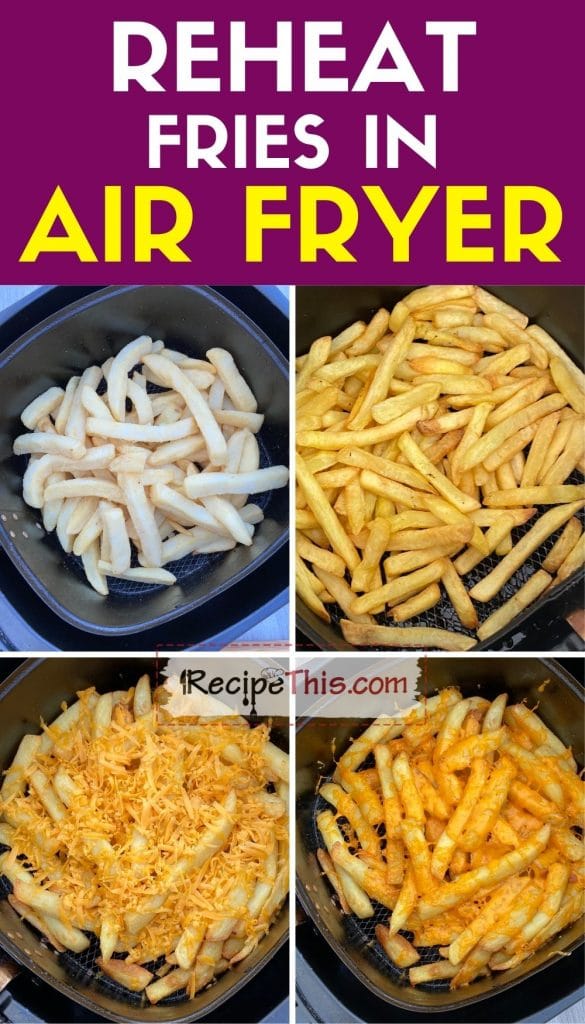
Overcrowding is the #1 cause of soggy fries. Spread in a single layer with space between pieces, then lightly spritz with avocado oil (high smoke point prevents burning). Heat at 375°F for 2-5 minutes: shoestring fries at 2:30, steak-cut at 4:30. Critical mistake: Shaking the basket before 90 seconds. Wait until a crust forms—early shaking smashes the developing crisp layer. Check at 2 minutes, then add time in 30-second bursts. Done when golden and audibly crisp when tapped.
Revive Leftover Steak Without Drying Out
Brushing with melted butter before reheating adds moisture barrier and flavor. For medium-rare leftovers: heat whole steak at 350°F for 4-6 minutes (sliced: 3-4 minutes). Flip halfway using tongs—never pierce with a fork. Rest 3 minutes before slicing to redistribute juices. Warning: Well-done steak becomes tough; this method works best for medium-cooked originals. Always verify internal temperature hits 165°F with a meat thermometer. Visual cue: Surface should sizzle faintly when touched.
Fried Chicken That Tastes Fresh Off the Fryer
Bone-in pieces need 375°F for 10-12 minutes; tenders take 4-5. Arrange pieces skin-side up with ½-inch spacing—touching skin creates steam zones causing sogginess. Critical error: Covering with foil. This traps steam, defeating the air fryer’s crisp-revival superpower. Check at 8 minutes: skin should audibly crackle when tapped, and juices should run clear. For extra crunch, spritz skin with oil before reheating.
Handle Saucy Foods Without Mess or Burning
Pasta dishes require moisture management. Place in oven-safe dish (never fill above ¾ capacity), add 1 tbsp water or sauce, and cover loosely with foil. Heat at 350°F for 6-10 minutes until bubbling at edges. For Chinese takeout: line basket with perforated parchment, heat saucy items at 375°F for 2-3 minutes, and microwave sauce separately to prevent burning. Pro move: Stir halfway for even heating—sauces separate if undisturbed.
Foods That Fail in Air Fryers (Avoid These!)
Soups, stews, and gravy create hazardous splatters and heat unevenly. Large roasts or whole chickens overcook exteriors while interiors stay cold due to limited air circulation. Delicate greens like spinach wilt and scorch in under 60 seconds. Battered items with wet coatings (e.g., tempura) lose structure from rapid surface drying. When in doubt: if it’s mostly liquid or larger than your basket, choose oven reheating instead.
Critical Safety Steps Nobody Tells You
Preheating isn’t optional for consistent results—it stabilizes the cooking chamber. Never preheat with parchment paper alone; food weight prevents it from contacting heating elements (fire risk). Always check internal temperature reaches 165°F with a thermometer. Visual safety checklist:
– Golden-brown color (not pale or blackened)
– Steam rising consistently from multiple spots
– Crisp texture when pressed (no soft spots)
Start checking 90 seconds early—air fryers go from perfect to burnt in 60 seconds.
Advanced Reheating Techniques for Complex Meals
Multi-stage reheating transforms burgers: heat patty at 400°F for 4 minutes, bun at 375°F for 90 seconds, then assemble with fresh veggies. Revive stale bread: mist baguettes with water, heat at 320°F for 2 minutes—steam rehydrates crumbs while dry heat crisps crust. Portion control rule: Reheat single servings only. Multiple reheats degrade texture and risk bacterial growth in temperature danger zones.
Equipment Tweaks for Your Air Fryer Model
Compact 2-qt models heat 25% faster than 5-qt baskets—reduce times by 1 minute initially. Oven-style air fryers need 10% more time due to wider air dispersion. Always leave 1-inch clearance around oven-safe dishes for air circulation. Pro tip: Place a wire rack inside the basket for saucy foods—it elevates items above pooling liquids that cause sogginess.
Master Leftover Revival in 3 Principles
Success hinges on temperature precision, single-layer spacing, and vigilant timing. Start with recommended settings, then adjust based on your model’s quirks. The goal isn’t merely warm food—it’s leftovers rivaling fresh meals. When you nail how to reheat in air fryer techniques, cold pizza transforms into brunch-worthy slices, and yesterday’s steak becomes tonight’s centerpiece. With these science-backed methods, your air fryer stops being a cooking appliance and becomes a food-resurrection machine. Stop sacrificing texture for convenience—your crispiest leftovers start with these exact steps.

